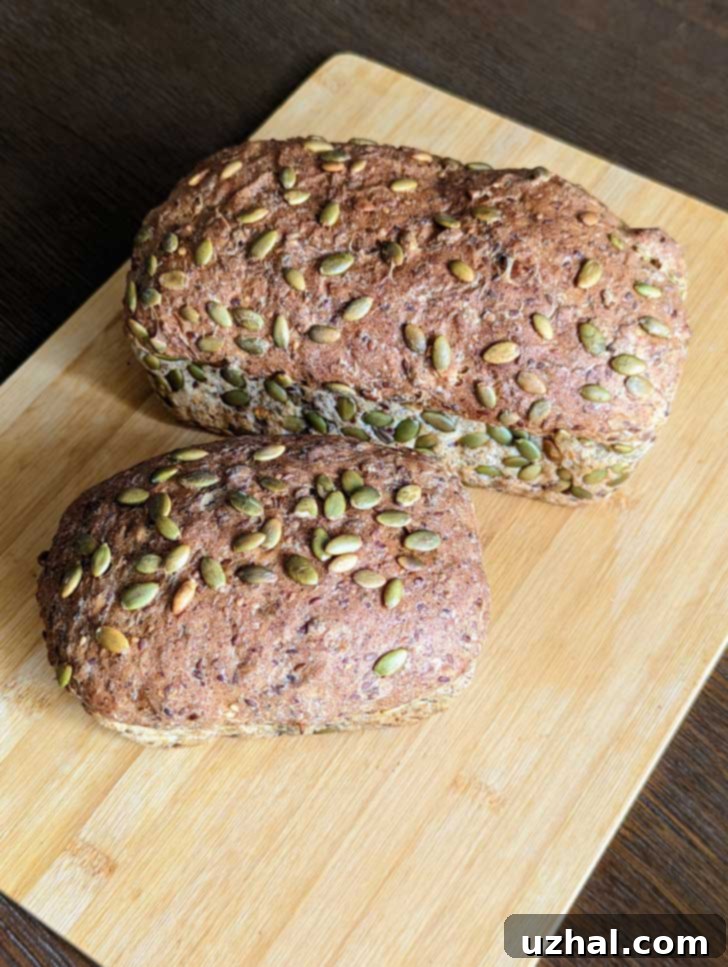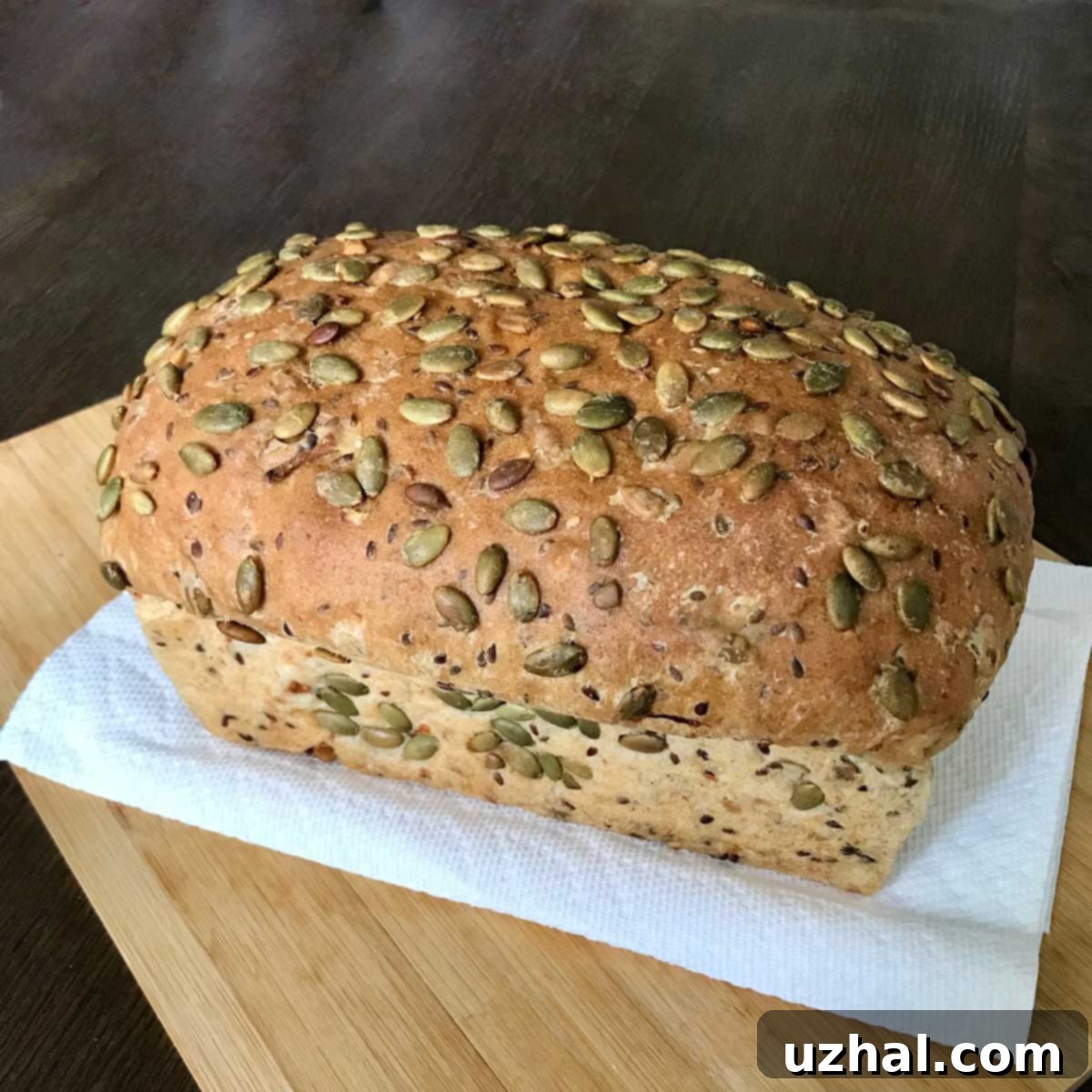Mastering the Homemade Wegmans Marathon Bread Copycat: Your Guide to a Chewy, Seeded Loaf
There are very few grocery store bakery items that achieve legendary status, but for many bread enthusiasts, Wegmans’ Marathon Bread stands as a true masterpiece. Its unique character – a glorious combination of incredible stretchiness, satisfying chewiness, and a surprisingly light texture – sets it apart from typical supermarket offerings. This isn’t just bread; it’s an experience, a delightful anomaly in the world of baked goods, and quite possibly my all-time favorite. While the exact origin of its intriguing name remains a delightful mystery – perhaps referring to the marathon of ingredients (reportedly around 26!), or its ability to fuel you through a long day – its deliciousness is indisputable. The moment you tear into a slice, you’re greeted with an airy crumb, packed with an abundance of seeds that provide both crunch and a rich, earthy flavor. This beloved loaf sparked a culinary quest for me: to replicate its magic in my own kitchen.
Unlocking the Perfect Texture and Flavor Profile
My journey to recreate this extraordinary bread at home wasn’t just a casual baking project; it quickly became an obsession. I was determined to crack the code of its distinctive texture and flavor. Before embarking on this specific mission, I had experimented with numerous other seed bread recipes. Many were excellent in their own right, yielding delicious, wholesome loaves. However, none quite captured that elusive balance of super stretchy, chewy, yet incredibly light crumb that defines Wegmans’ Marathon Bread. This pursuit turned into a deep dive into the science of bread making, particularly highlighting the transformative power of vital wheat gluten.
Through countless experiments, varying hydration levels, and adjusting ingredient ratios, I steadily edged closer to my goal. Each loaf brought new insights, teaching me invaluable lessons about dough development and the interplay of different flours and additions. The breakthrough moment arrived when I discovered and meticulously studied the recipe for Rose Levy Beranbaum’s 10 Grain Cereal Bread. Rose, a legendary figure in the baking world, provided the foundational structure and understanding I needed. Her approach to incorporating grains and achieving optimal texture was precisely the missing piece of my puzzle. Her recipe served as the perfect springboard, allowing me to tailor and adapt her brilliant techniques to achieve the specific characteristics of the Marathon Bread I so admired.
Crafting Your Custom Seed and Grain Blend
Rose Levy Beranbaum’s 10 Grain Cereal Bread recipe is lauded not only for its fantastic results but also for its incredible versatility. As she herself notes, it’s a favorite that can be endlessly customized by simply altering the types of grains and seeds used. While I certainly explored her original 10-grain cereal blend – and found it to be exceptionally good – I discovered that for my specific quest to emulate Wegmans, a personalized approach worked best. I preferred to craft my own unique blend, focusing on a robust combination of whole flax seeds, hearty oats, and an assortment of other nutritious seeds.
The beauty of creating your own blend lies in the control it offers. You can select your favorite seeds, ensure their freshness, and adjust quantities to suit your taste. For my copycat version, I meticulously chose ingredients that would contribute to both the texture and the subtle, wholesome flavor profile of the original. Beyond the basic seeds, I took an extra step to infuse the bread with even more of the Marathon Bread’s distinctive character. This involved incorporating small, softened pieces of banana chips, finely chopped dried apples, and tiny carrot pieces, all of which were carefully soaked beforehand. These optional, yet highly recommended, additions contribute a delicate sweetness, an extra layer of moisture, and a complexity that elevates the loaf, bringing it remarkably close to the original’s nuanced flavor.
Another crucial element in mirroring the iconic appearance of Wegmans’ Marathon Bread is the generous scattering of pumpkin seeds across the top of the loaf before baking. These not only add a beautiful golden-brown hue and a delightful crunch but also serve as a visual signature that immediately says “Marathon Bread.” Soaking your chosen grains and seeds beforehand is not merely a suggestion; it’s a vital step. Soaking helps to soften the grains, allowing them to fully hydrate and integrate into the dough, which in turn contributes to a more tender crumb, improved digestibility, and an overall superior texture in the final baked product. This thoughtful preparation ensures that every bite is a harmonious blend of soft bread and flavorful, plump seeds.
The Essential Tool: Your Stand Mixer
When it comes to baking this particular style of super seed bread, a stand mixer equipped with a dough hook isn’t just a convenience; it’s truly an essential piece of equipment. The dough for this recipe is notably soft and sticky, which is precisely what contributes to its signature stretchy and chewy texture. Attempting to knead such a high-hydration dough by hand would be an incredibly challenging, if not frustrating, endeavor. The natural instinct when dealing with sticky dough is to add more flour, but this is a pitfall we must avoid.
Adding excessive flour to compensate for stickiness drastically alters the dough’s hydration balance. This results in a much stiffer, denser dough that will not achieve the desired bouncy, elastic quality crucial for a high rise and a light, airy crumb. The stand mixer, with its consistent and powerful kneading action, efficiently develops the gluten structure without the need for additional flour. This allows the dough to remain at its optimal hydration level, ensuring that it develops the necessary elasticity to stretch, expand, and trap air bubbles during proofing and baking. The outcome is a loaf that is wonderfully light and fluffy, yet retains that characteristic satisfying chew. It rises beautifully, creating a tall, impressive loaf that truly captures the essence of the Marathon Bread’s delightful eating experience. Investing in a good stand mixer is a game-changer for this recipe, making the process enjoyable and the results consistently superb.

Choosing the Right Loaf Pan for Your Seed Bread
One of the beauties of this seed bread recipe is its adaptability, especially when it comes to loaf pan sizes. You’re not restricted to a single format; you can choose to bake one grand, substantial loaf, much like Rose Levy Beranbaum often does, or divide the dough to create multiple smaller, more manageable loaves. This flexibility allows for personalized baking, whether you’re baking for a crowd or want several smaller loaves for gifting or freezing.
Personally, I often find myself making two loaves from a single batch of dough. A common combination for me is one 18 oz loaf alongside a smaller 12 oz loaf. For these, an 8×4 inch pan works wonderfully for the larger loaf, while a small ceramic pan is perfect for the smaller one. Alternatively, if I’m craving a single, impressive centerpiece, I might allocate all the dough to my usual standard loaf pan, which consistently delivers excellent results. Experimenting with different pans can also yield unique crusts and crumb textures.
I’ve also successfully baked this recipe in a deep loaf pan, which produces a wonderfully tall, uniform slice, and even in a Pullman loaf pan, but without its lid. Using a Pullman without the lid still allows for an incredibly even bake and a beautifully shaped loaf, just without the characteristic square top that a lidded Pullman provides. The material of your loaf pan can also play a role; metal pans tend to conduct heat more efficiently for a crisper crust, while ceramic pans might offer a slightly softer, more insulated bake. Regardless of your choice, ensuring the pan is adequately greased and floured (or lined with parchment paper) is key to a clean release and a perfectly shaped loaf. The flexibility in pan choice means you can tailor your baking to your aesthetic preferences and practical needs, making each batch of this delightful seed bread uniquely yours.
Your Journey to the Perfect Homemade Seeded Loaf
While my personal quest led me to develop my own nuanced version of this exceptional seed bread, building upon the foundations laid by baking luminaries, it’s important to acknowledge the incredible resource that Rose Levy Beranbaum’s original 10 Grain Cereal Bread recipe provides. My version largely distinguishes itself by incorporating a higher quantity of soaked flax seeds, which contributes to an even chewier texture and a richer nutrient profile, as well as the unique addition of softened banana chips, dried carrot, and apple pieces. These additions were my secret weapons in truly capturing the subtle fruity and earthy notes often found in the beloved Wegmans Marathon Bread.
For those embarking on this baking adventure, I wholeheartedly recommend starting with Rose’s recipe (the link can be found in the “Texture and Flavor” paragraph above) as your primary guide for the fundamental techniques and detailed instructions. Her recipes are renowned for their precision and clarity, making them an invaluable resource for bakers of all skill levels. Think of my modifications as optional enhancements, designed specifically to push your homemade loaf even closer to the distinctive profile of the Marathon Bread. Use the beautiful photographs I’ve shared throughout this article as inspiration for how your finished loaves can look, from the generous seed topping to the golden-brown crust.
Baking bread, especially a complex loaf like this, is a rewarding process that combines science with a touch of artistry. Don’t be afraid to experiment with your own seed combinations or even other dried fruits, always keeping in mind the balance of flavors and textures. The joy of baking lies not just in the delicious outcome, but in the journey of discovery and the satisfaction of creating something truly special from scratch. Happy baking, and enjoy your incredibly flavorful, chewy, and wholesome homemade seeded bread!
- Another Good Bran Muffin
- Wheat and Flax Bread
- Flax and Garlic Crackers
- Vegan Oatmeal Chocolate Chip Cookies
- Flax & Sunflower Seed Rolls
